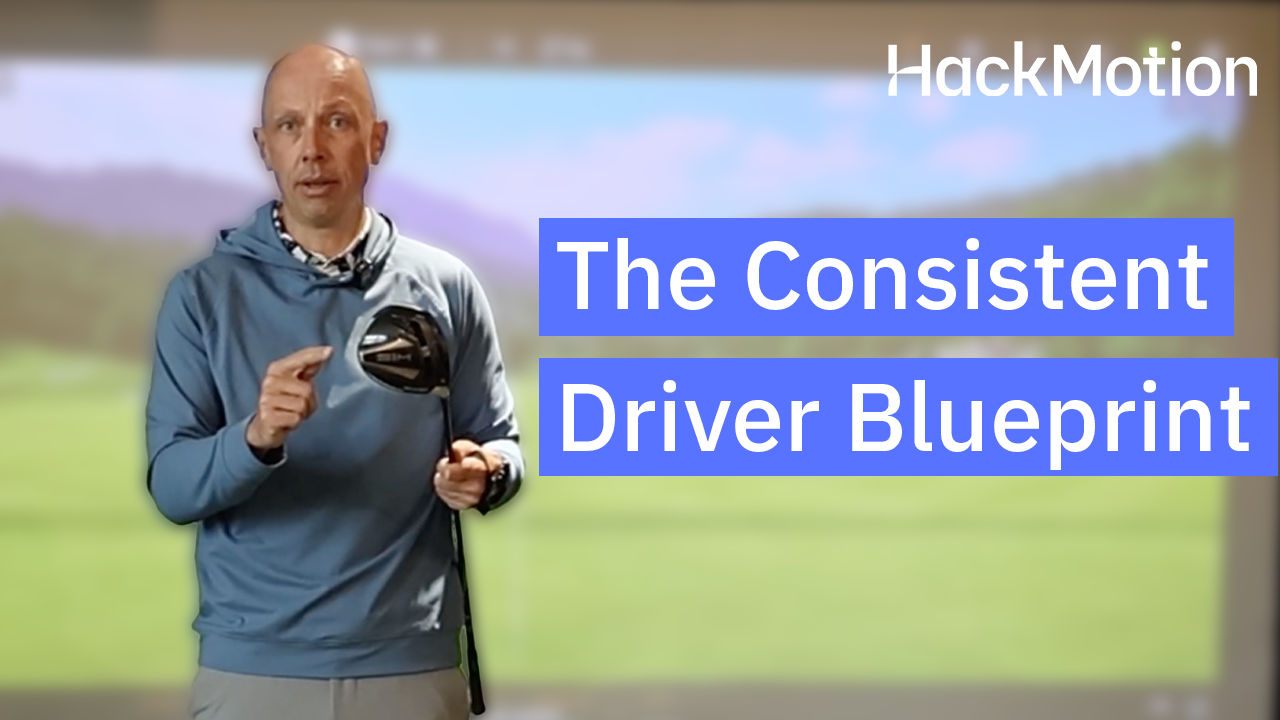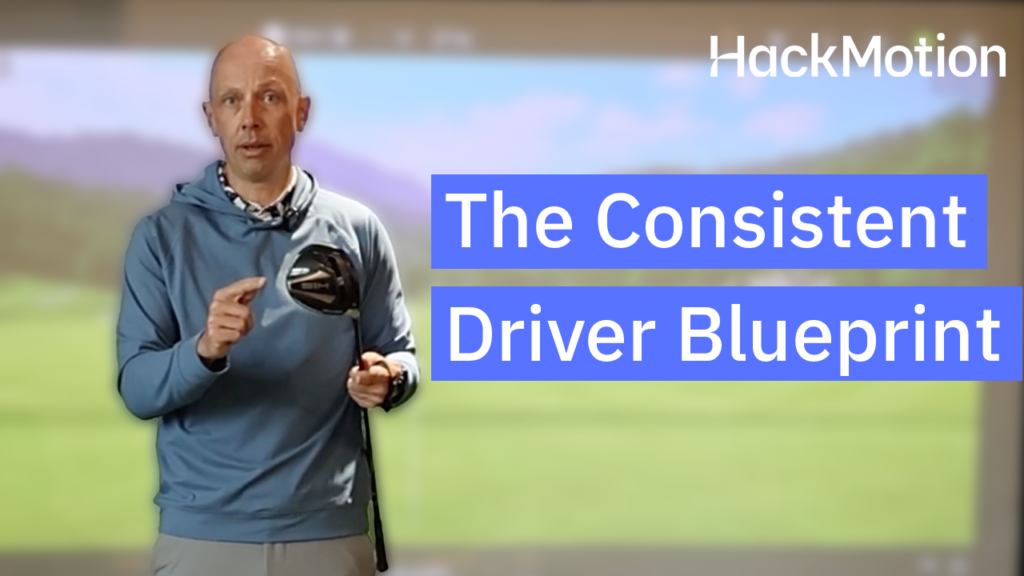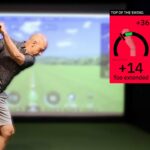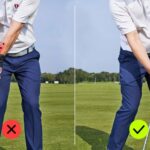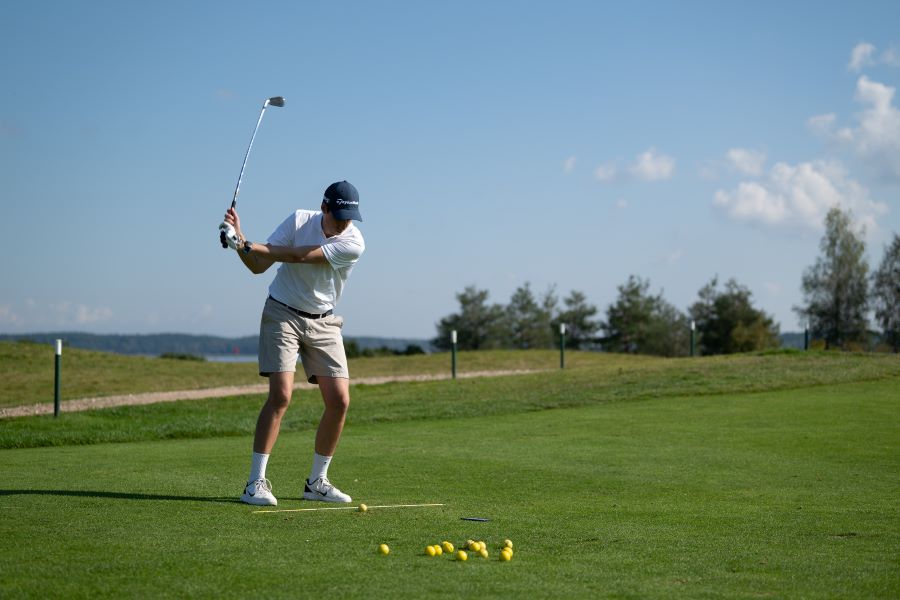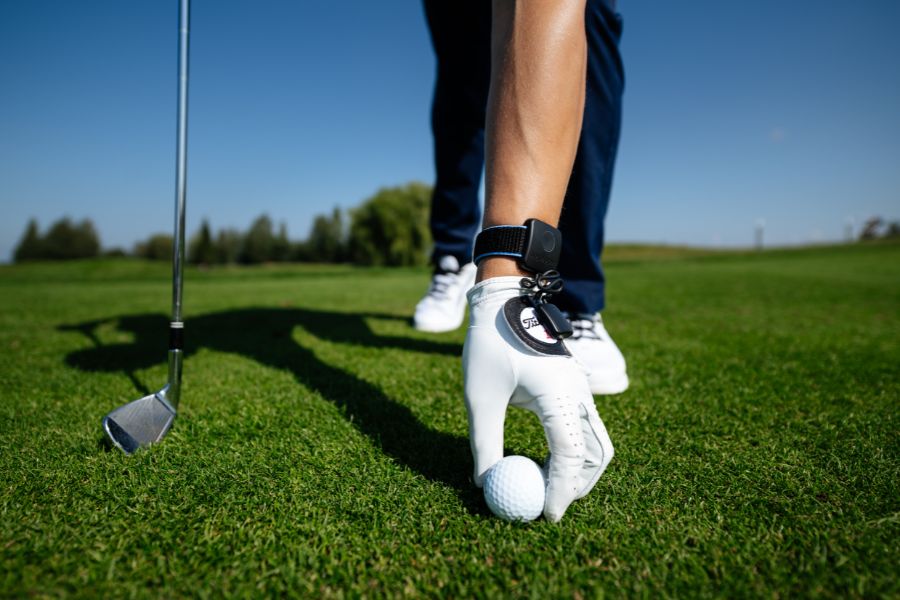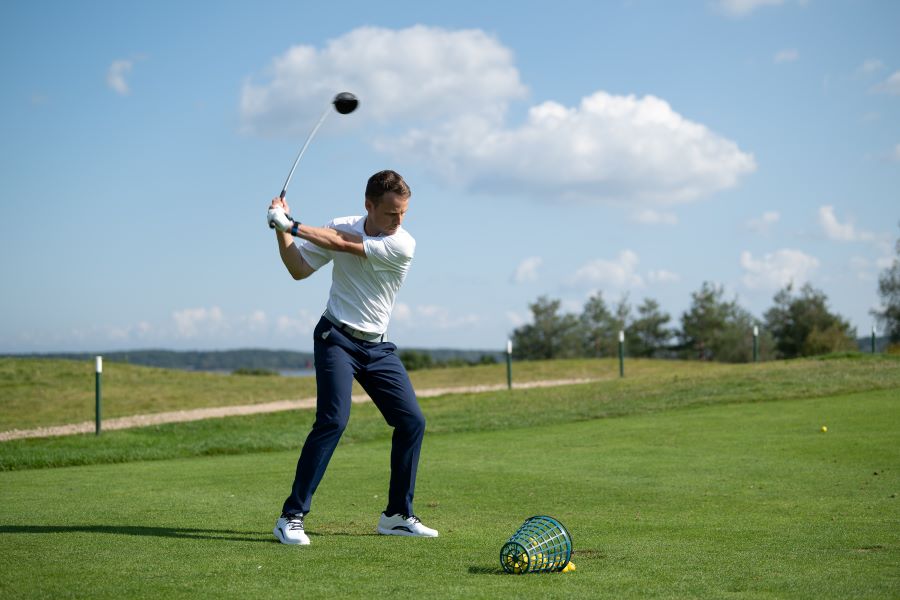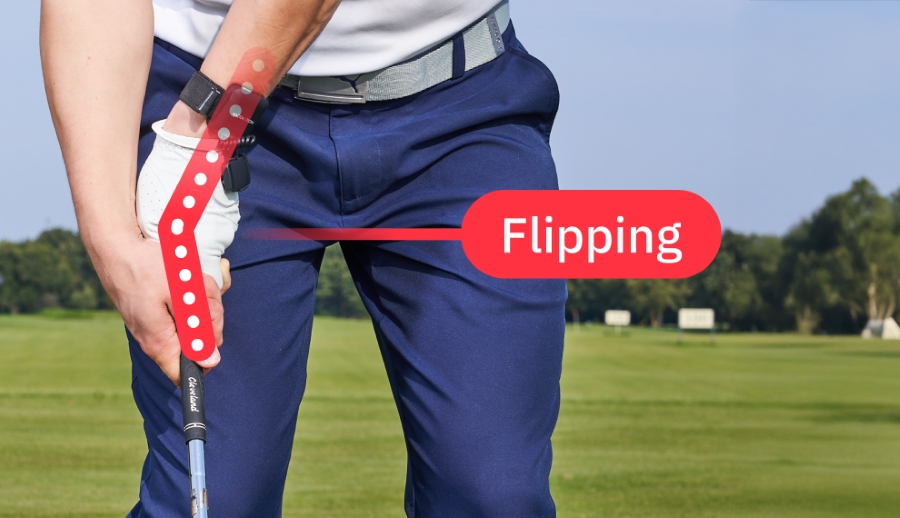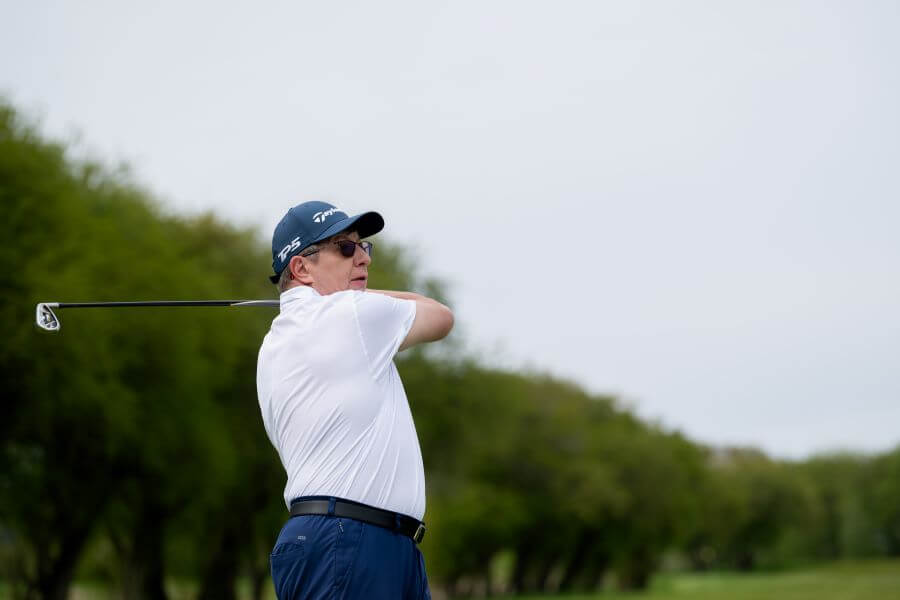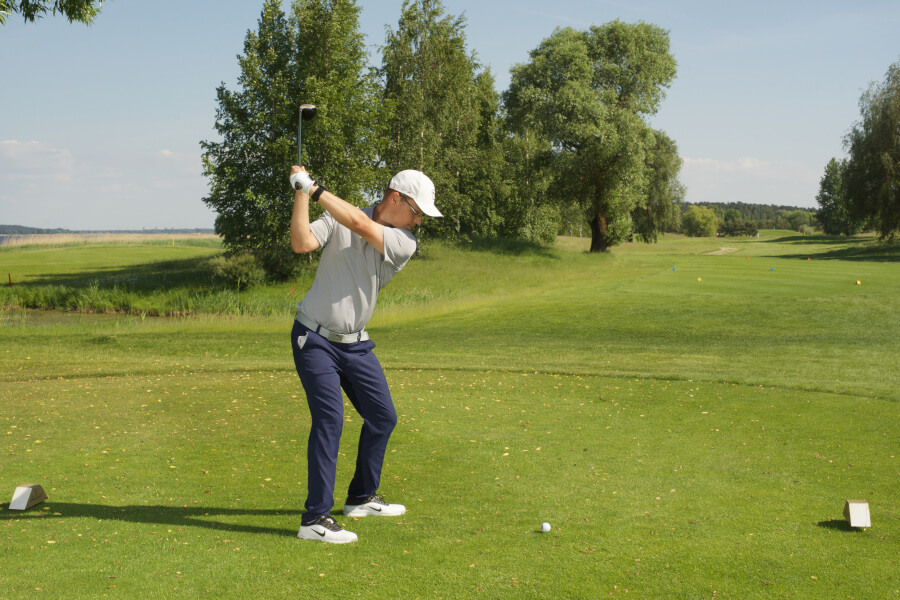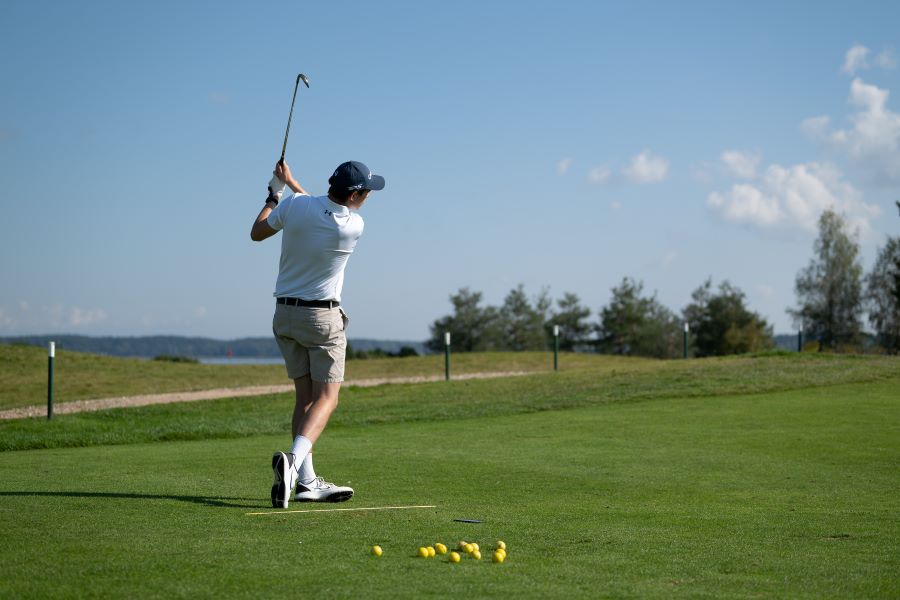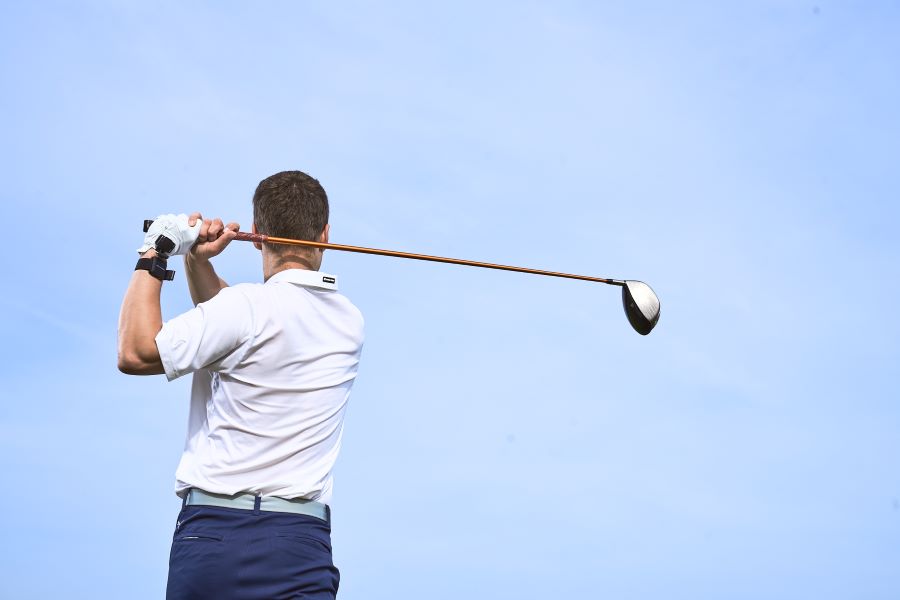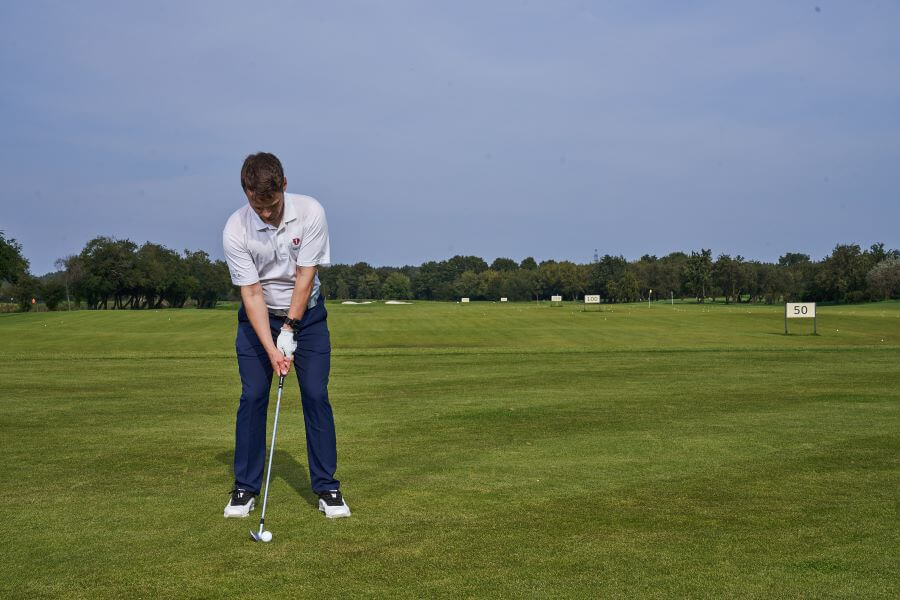Stop Topping Your Driver: 6 Actionable Steps to Stop Topping Drives
The topped driver always hurts your ego, but it’s especially bad on that first tee box with everyone watching.
The topped drive is more common than most golfers would like to admit to, but luckily, there are some ways in which you can fix it.
Here’s how to stop topping your driver.
Key Takeaways
Topping your driver usually means something is off in your impact conditions. Here are the most common causes and what you might see in your ball flight, on your HackMotion app or swing video:
- Flipping the Wrists: Club shaft overtakes the lead arm early. You’ll often see a low, weak shot or the top half of the ball struck. HackMotion may show a spike in lead wrist extension at impact.
- Early Casting: Wrists unhinge too soon in the downswing. Shots feel underpowered with low launch and thin contact. HackMotion shows trail wrist extension lost early.
- Standing Up: Losing spine angle pulls the club away from the ball. Watch for your head rising through impact or feeling off-balance at finish.
- Poor Ball Position or Tee Height: Ball too far forward or teed too low leads to hitting up too early. Contact feels high on the face or topped with very little launch.
- Hanging Back: Weight stays on the trail side. You may feel like you’re leaning away from the target and notice topped or ballooned drives.
Why Am I Topping My Driver?
1. Set the Correct Tee Height and Ball Position
The driver’s face should make contact with the ball around the center or just above the center. The rule of thumb is to have about half the golf ball above the driver crown at address. The ball position should be off your lead heel.
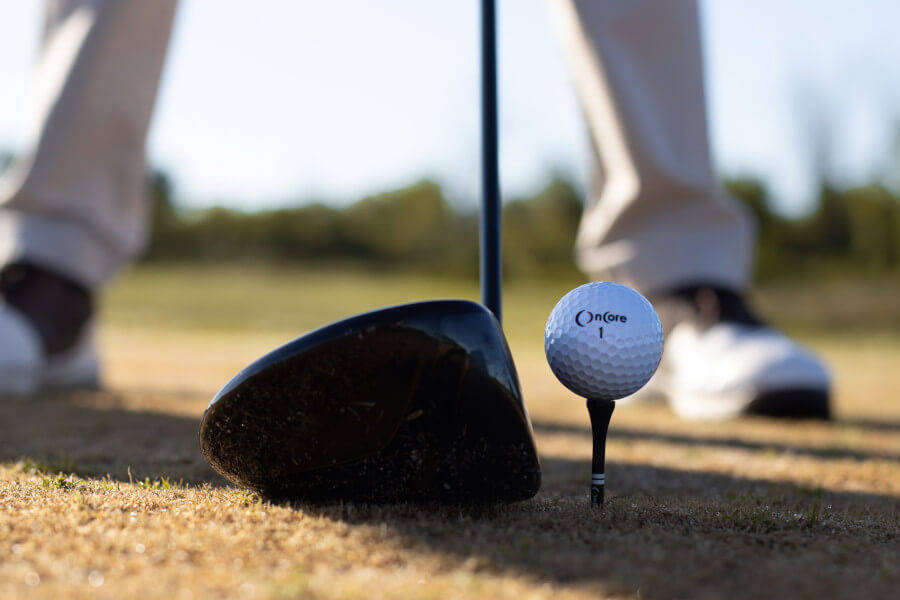
If the ball is too far forward, you can reach or scoop for it through impact, and if it’s too far back, your swing plane will be too steep.
Experiment on the range with small tee-height adjustments until you find the sweet spot that delivers consistent, centered strikes. Make a line on the tee with a marker to test different heights.
2. Look for Stable Wrist Flexion Through Impact
After analyzing more than a million golf swings with the HackMotion sensor, we’ve found that stable wrist angles through impact lead to more consistent contact.
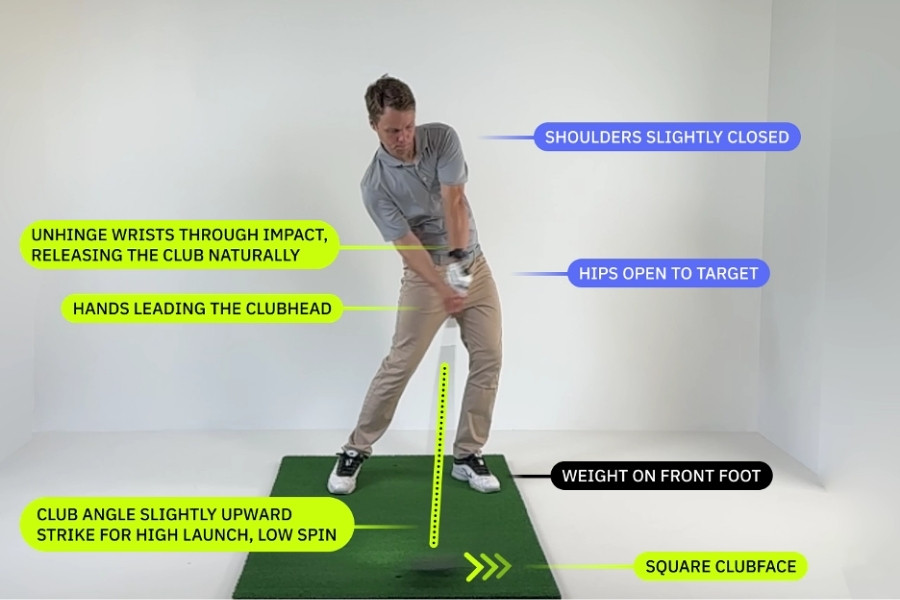
The key with a driver is to have a flat lead wrist at the top of the backswing and then maintain this position through impact.
Wear your HackMotion and measure your wrist extension/flexion through impact. You’ll know if you are flipping your lead wrist if you see a sudden spike in wrist extension right before impact.
3. Maintain Spine Angle
A classic cause of topped drivers is “standing up” on the downswing. Start with an athletic posture where you have a slight knee flex and a tilt forward from the hips.
The goal is to maintain this posture throughout the swing!
Think of your body having to rotate around a fixed point. Practice this indoors by resting your head lightly on a wall and ensuring your head doesn’t lift away from the wall as your downswing is starting.
4. Transfer Your Weight Forward
Watch any professional golfer at impact with their driver, as the majority of their weight is on their lead foot. For many amateur golfers, the opposite is true.
The proper low point of the driver is slightly after the ball when you are hitting up on it. With the correct weight shift, that position is attainable.
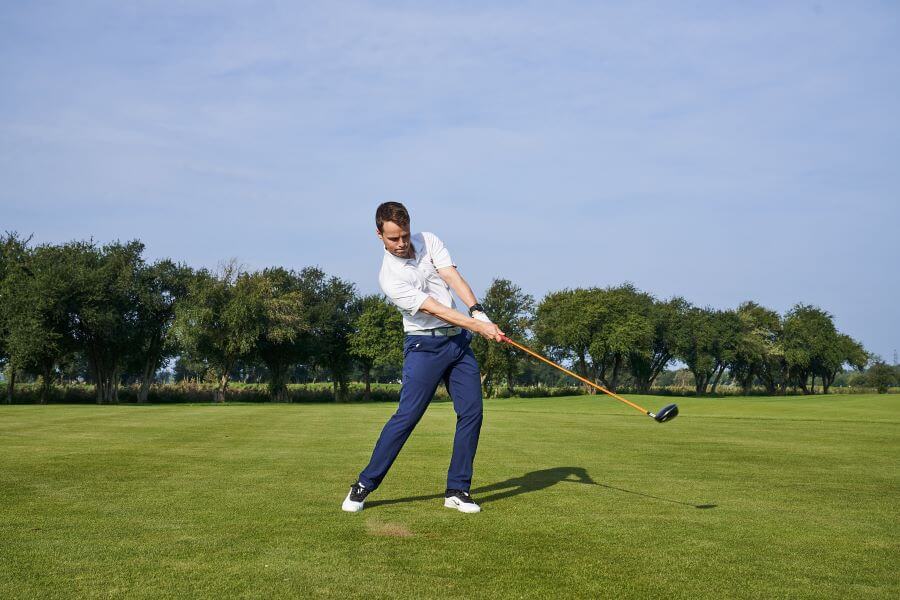
- Early in the transition from backswing to downswing, start shifting your hips and pressure onto your lead leg.
- When you finish a golf shot, check to see if most of your weight is on the lead side and you are in a balanced and upright position.
Players who hang back on the trail foot often flip or top the ball to “help it up.”
5. Sync Arms and Body
When your arms and upper body rotate in sync, the club’s low point is more predictable.
Coordination drills are typically a focus for golfers when hitting wedge and iron shots. However, this is just as important when it comes to the driver.
Take some half swings, focusing on letting your chest, shoulders, and arms move together. Check your HackMotion to ensure your wrists are not overrotating or extending. Get the body to work together.
6. Loosen (But Don’t Lose) Grip Pressure
Finally, you have to remember that the grip you have on the club is your only connection point.
Grip pressure needs to be decreased to increase power, decrease the chance of a flip, and ultimately save you from topping your drive.
When practicing on the range, take a loose grip and see what it does. Add a little grip pressure until you feel like you are at about medium pressure.
On a scale of 1-10, you want to be in the 4-5 range to allow for proper forearm rotation and a square face at impact.
Drills to Fix a Topped Driver
If you are still working on fixing the topped shots with your driver, try these drills. Wearing your HackMotion while working on the drills will help you measure your progress.
1. Anti-Flip Drill
The Anti-Flip drill helps you learn the importance of the flat lead wrist at impact. Some golfers forget the lead wrist position is important even with the driver swing.
Anti-Flip Drill – Step by Step:
- Set Up with Forward Shaft Lean: Hover the driver just behind the ball at address, with your hands slightly ahead of the clubhead.
- Preset the Lead Wrist: Feel a flat or slightly flexed (bowed) lead wrist that mimics your ideal impact position.
- Use HackMotion Feedback: Monitor your lead wrist to avoid rapid extension (flipping) through impact.
- Start with Short Punch Shots: Make controlled, compact swings while focusing on maintaining lead wrist stability.
- Hold the Finish: After contact, your lead wrist should remain flat or slightly flexed, with a stable clubface.
Why It Works: Prevents the “scooping” action that causes you to catch only the top of the ball.
2. Casting Drill
Casting happens when you lose your wrist hinge angle through impact. The Casting drill is included in the HackMotion app so you can practice it in real time.
The Casting Drill will help you learn to retain lag through impact and probably add a few yards to your drive.
Fix Your Casting with HackMotion
Train to fix casting by generating power with your core and lower body.
HackMotion Casting Drill – Step by Step:
- Slow Rehearsals: Make a normal backswing, then begin the downswing by shifting weight left and rotating hips. Don’t pull down with your arms.
- Maintain Trail Wrist Bend: Check HackMotion data on your trail wrist. Keep it extended (bent) as you initiate the downswing.
- Arms Follow: Allow the arms to drop naturally, letting the club “lag” behind.
- Progressive Speed: Start slowly, building up speed while retaining your wrist angles.
HackMotion Tip: If your trail wrist extension straightens too soon, you’re casting. Keep the extension longer to store power.
Why It Works: Early casting robs you of power and consistent contact. Delaying the release helps you strike the ball solidly on the upswing and stop topping.
3. “Bowling” or Scottie Scheffler Drill for More Turn and Better Contact
The Bowling Drill for better driver contact can break you out of the habit of topping your golf shots. You’lll pull your trail foot back and flare it slightly outwar for this oned.
This new starting position makes rotating and delivering the club with a flat lead wrist much easier.
“Bowling” or Scottie Scheffler Drill – Step by Step:
- Pull Your Trail Foot Back: Flare it slightly outward. This opens up your stance, frees your hips, and encourages a bigger, more athletic backswing.
- Big Backswing: Focus on making a full turn. Feel your hands travel a longer path around your body to build coil and store potential power.
- Deliver the Club: On the downswing, keep your trail foot back and visualize an underhand “bowling” motion. This promotes proper weight shift and helps you drive energy into the clubhead rather than spinning out with your lower body.
Why It Works: A longer backswing + proper lower-body stall = more speed and better upward strike, reducing the chance of topping.
Final thoughts
Topping the driver can feel like the end of the world on the tee box, but it’s usually a sign of a few correctable issues like poor wrist mechanics, spine angle changes and issues with weight shift.
Use these drills and fixes to work on increasing your confidence off the tee box.
HackMotion data will give you a real time analysis as to how you are improving and moving towards reaching your goals.
